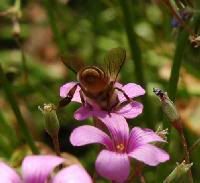Apparently, bee stingers are attached to the muscles and viscera of their pelvises. This allows the stingers to continue flexing and digging into your flesh once they have stung you--even after the stinger has fallen away from the bee’s body. There’s no evolutionary reason to keep the bee alive after they sting you because they are protecting the hive. And, it makes no sense to have a bee equipped with an extra, metabolically-expensive set of stinging muscles that are needed only in an emergency. Thus, they “detach” and use the same muscles to sting you as they would otherwise need to carry on living. How freakin' cool is that?!
[Image from: http://www.hellkvist.org/photos/china.php]

No comments:
Post a Comment